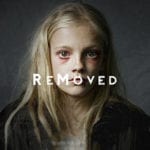 Technology
Technology  Technology
Technology  Humans
Humans 10 Everyday Human Behaviors That Are Actually Survival Instincts
 Animals
Animals 10 Animals That Humiliated and Harmed Historical Leaders
 History
History 10 Most Influential Protests in Modern History
 Creepy
Creepy 10 More Representations of Death from Myth, Legend, and Folktale
 Technology
Technology 10 Scientific Breakthroughs of 2025 That’ll Change Everything
 Our World
Our World 10 Ways Icelandic Culture Makes Other Countries Look Boring
 Misconceptions
Misconceptions 10 Common Misconceptions About the Victorian Era
 Mysteries
Mysteries 10 Strange Unexplained Mysteries of 2025
 Miscellaneous
Miscellaneous 10 of History’s Most Bell-Ringing Finishing Moves
 Technology
Technology Top 10 Everyday Tech Buzzwords That Hide a Darker Past
 Humans
Humans 10 Everyday Human Behaviors That Are Actually Survival Instincts
 Animals
Animals 10 Animals That Humiliated and Harmed Historical Leaders
Who's Behind Listverse?

Jamie Frater
Head Editor
Jamie founded Listverse due to an insatiable desire to share fascinating, obscure, and bizarre facts. He has been a guest speaker on numerous national radio and television stations and is a five time published author.
More About Us History
History 10 Most Influential Protests in Modern History
 Creepy
Creepy 10 More Representations of Death from Myth, Legend, and Folktale
 Technology
Technology 10 Scientific Breakthroughs of 2025 That’ll Change Everything
 Our World
Our World 10 Ways Icelandic Culture Makes Other Countries Look Boring
 Misconceptions
Misconceptions 10 Common Misconceptions About the Victorian Era
 Mysteries
Mysteries 10 Strange Unexplained Mysteries of 2025
 Miscellaneous
Miscellaneous 10 of History’s Most Bell-Ringing Finishing Moves
10 Blockbuster Movies Originating from Short Stories
One would expect that most film adaptations are from famous novels, which is the case in some instances. But through the years, plenty of well-known movies were adapted from short stories printed in newspapers or book compilations—with famous and not-so-famous authors’ shorter reads becoming movie blockbusters.
Films like Apocalypse Now, Minority Report, 3:10 to Yuma, and Johnny Mnemonic are all such short story adaptations. And then there was Agatha Christie—the woman whose literary works are only outsold by the Bible and Shakespeare. Her novels and short stories have seen a multitude of remakes of adaptations—with avid detective fans still being mesmerized by the petite Mrs. Marple and the little Belgian, Hercule Poirot, in solving crimes.
Whatever your favorite movies are, the chances are that one or more of them were adapted from a novella or short story, just like the ten on our list.
Related: 10 Influential Movies With Dark And Surprising Origins
10 The Living Daylights (Ian Fleming)
Octopussy and The Living Daylights was the 14th and final James Bond book in the Bond series by Ian Fleming. The titular stories were published together after his death in 1964, with two additional stories added in later years. Both “Octopussy” and “The Living Daylights” were later adapted for the silver screen but were separately published in various magazines before this collection.
“The Living Daylights” is only about 36 pages long, depending on the publication platform. It is read in less than 28 minutes by Dan Stevens on YouTube! When visiting the local library, one finds that most of Flemings’ stories were on the shortish side, which is difficult to believe when watching the long, action-packed movies. Despite the author’s death at a youngish age, the 007-franchise was long established by the time of its publication, and the 1987 movie, starring Timothy Dalton as Bond, made $191.2 million worldwide. Not bad at all for a film made from a short story.[1]
9 Jumanji (Chris Van Allsburg)
Jumanji, the 1995 film, was based on a children’s book written and illustrated by American author Chris Van Allsburg who also penned and illustrated The Polar Express, another picture-book-turned-film starring Tom Hanks. As it goes in movies made from books, Jumanji saw many changes, such as the swapping of main characters and adults being added—with Robin Williams as one of the adults.
Jumanji was such a success that an animated TV series ran from 1996 to 1999. Van Allsburg, who had won many writing accolades, went on to write “Zathura” (2002)—a science-fiction sequel to “Jumanji,” which was adapted to film as Zathura: A Space Adventure (2005). Two more films followed—Jumanji: Welcome to the Jungle (2017) and Jumanji: The Next Level (2019).[2]
8 The Illusionist (Steven Millhauser)
The 2006 film, The Illusionist, starring Edward Norton and Jessica Biel, is a loose adaptation of Pulitzer Prize-winning author Steven Millhauser’s short story, “Eisenheim the Illusionist,” from the short stories collection, The Barnum Museum: Stories. It tells the story of Eisenheim, born Eduard Abramovich, an illusionist in Vienna at the turn of the nineteenth century. The film is about magic, class, politics, and passion, with Abramovich and his childhood love meeting again after fifteen years, throwing him into a rivalry with her high society fiancé.
American film director Neil Burger adapted the story, changing quite a lot from Millhauser’s ink and paper version. Nevertheless, the movie is enthralling and entertaining and made around $87 million at the box office worldwide.[3]
7 The Birds (Daphne du Maurier)
The short story “The Birds” was first published as part of a collection of stories in The Apple Tree: A Short Novel and Other Long Stories by Daphne du Maurier. It has been republished through the years under other titles. The plot depicts birds attacking humans in Britain and all over Europe in rebellion against the way humans rule the world. Du Maurier’s inspiration for the story apparently came from her observing a farmer being attacked by a flock of (probably poisoned) gulls while he was plowing a field.
The story caught the eye of Alfred Hitchcock, and he used the idea loosely to create a film with the same name, released in 1963. There are many contrasts between the two versions, such as different characters and settings. While the short story played out in London, Hitchcock’s film was set in California.
Interestingly, Hitchcock and Du Maurier, combined previously for the film Rebecca (1940), of which a Ben Wheatley remake was released in 2020.[4]
6 The Killers (Ernest Hemingway)
The Killers was a 1946 American film noir starring Ava Gardner that also débuted Burt Lancaster. It is partly based on a 1927 short story with the same title by Ernest Hemingway. The story follows an intriguing investigation into the contract killing of a former boxer who got involved in crime after his career was cut short.
Directed by Robert Siodmak, the film was released in August 1946, and Anthony Veiller was credited for the screenplay, which was co-written with John Huston and Richard Brooks. The movie was a success and earned four Academy Award nominations. Hemingway, who was not normally satisfied with how Hollywood altered his work, allegedly admired the film.
In 1956, a 21-minute student film from the story was directed by Andrei Tarkovsky and two classmates at the State Institute of Cinematography in Moscow. And incidentally, Don Siegel directed a remake in 1964, in which Ronald Reagan starred for the last time before becoming a politician.[5]
5 Million Dollar Baby (Jerry Boyd aka F.X. Toole)
Actor/director Clint Eastwood’s Million Dollar Baby (2004), about a female boxer—starring himself, Hillary Swank, and Morgan Freeman—was based on a short story with a near-same title (“Million $$$ Baby”). The story was from the short fiction collection Rope Burns by F.X. Toole, an American writer born in Ireland as Jerold (Jerry) Hayden Boyd. Boyd had interesting jobs, but it was boxing that he was most passionate about, and his job in the gym gave him the insight to write his graphic stories. The story’s title was apparently inspired by the nose art of a World War II bomber. Boyd used the pseudonym to keep his writing separate from his job.
The screenplay was written by Paul Haggis, and even after Eastwood came aboard, it took a long time to make the movie—due to the many social controversies regarding the project. Unfortunately, Boyd died before he could see his short story adapted for film win four Oscars, including one for Best Director—making Eastwood the oldest winning director in Academy Awards history at the time.[6]
4 2001: A Space Odyssey (Arthur C. Clarke)
The film 2001: A Space Odyssey (1968), a science fiction classic exploring evolution and various futuristic issues, such as nuclear war and artificial intelligence, was based on short stories (“The Sentinel” and “Encounter in the Dawn”) by British writer Arthur C. Clarke. Director Stanley Kubrick decided to rework the stories into a novel for which Clarke had been credited as the author. It became an iconic film and is regarded as one of the most influential science fiction stories ever—remarkable since its release was a year before the moon landing. Clarke wrote sequels, of which one, 2010: Odyssey Two (1984), made it to the silver screen.
Clarke and Kubrick aimed to tell a realistic story and respected the laws of physics. How realistic it would turn out, they probably never guessed. Quite a few technologies featured in the film turned out to be predictions of technology we use today, such as flat screens, tablets, and voice-activated appliances—to name but a few. With insight from NASA scientists, predictions made about the human body in space travel had been and is still being researched today.[7]
3 The Secret Life of Walter Mitty (James Thurber)
“The Secret Life of Walter Mitty,” a 10-page 1939 short story by James Thurber, was first made into a movie in 1947. The author consulted in the making of the film, but he apparently hated the end result.
The 2013 remake, starring Ben Stiller, tells the story of how the work of an employee at Life magazine as the negative image manager is coming to an end due to digitalization. Mitty is always daydreaming about being heroic and doing adventurous things but never does anything of note. That is until he loses the negative for the final cover and goes on a brave search for it—and finally does some of the adventurous stuff he has always dreamed about.
The film differs wildly from the original short story and received mixed reviews. Nonetheless, it is a wonderful piece of escapism with an ending that makes one want to live life to the fullest.[8]
2 The Curious Case of Benjamin Button (F. Scott Fitzgerald)
F. Scott Fitzgerald is well-known for his novel The Great Gatsby, which was first made into a feature film in 1926 and has since had three remakes. Few people realize, though, that the brilliant story for the movie The Curious Case of Benjamin Button also came from his pen and was a short story published in 1922. The story contained less than 10,000 words. After years in the making, Brad Pitt, Cate Blanchett, and Tilda Swinton finally starred in the 2008 film, directed by David Fincher with the storyline developed by Eric Roth and Robin Swicord.
The story depicts the life of Benjamin Button, a man who was born old and grew younger until he died as a baby again. If such a story wasn’t difficult enough to get to be believable on paper, the film version was even more of a challenge. The project saw director after director leaving the set—unable to solve problematic story issues and getting the expenses for such a complicated movie venture covered. When the director, cast, and a cheaper location were finally in place, hurricane Katrina hit New Orleans, where the film was being shot. Filming was eventually done between November 2006 and September 2007, after which the long post-production process followed—a long winding road for such a short story![9]
1 The Shawshank Redemption (Stephen King)
One of the most acclaimed movies, making it to most movie lovers’ top 10 list, is The Shawshank Redemption, written and directed by Frank Darabont and starring Morgan Freeman and Tim Robbins. This 1994 film was based on the 1982 novella “Rita Hayworth and Shawshank Redemption,” from the collection Different Seasons by Stephen King. King has 34 stories and novels adapted to feature films to date—the most for a living author.
The Shawshank Redemption was nominated for seven Oscars but won none. While it was a box office flop, the movie gained popularity outside theaters and was the most rented movie of 1995.
The bulk of the movie was shot in Mansfield, Ohio, using the Ohio State Reformatory—not in Maine, where the Shawshank State Prison is situated. The tree made famous by the movie doesn’t stand anymore as lightning and wind destroyed it. And don’t even bother—there isn’t any money buried along the low wall either.[10]








